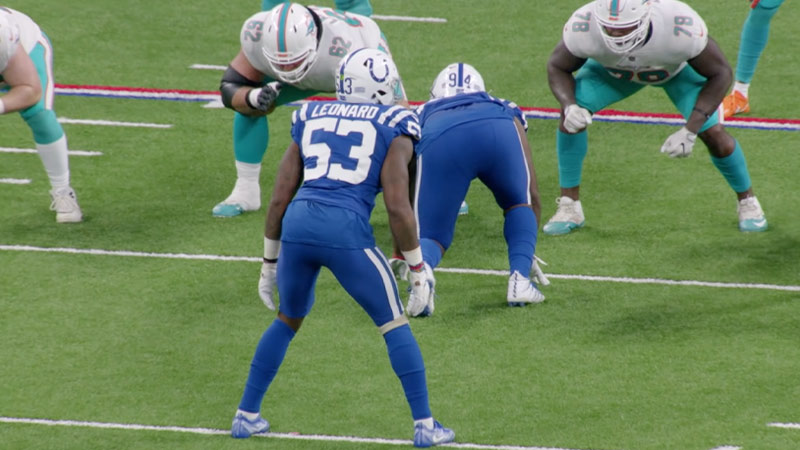In the ever-evolving landscape of football strategies, there’s a formation that stands as a testament to the sport’s rich history and innovation: the Football Single-Wing Formation.
While modern football often revolves around spread offenses and complex passing plays, the Single-Wing Formation harks back to the roots of the game, offering a glimpse into a bygone era when strategies were simpler yet equally effective.
In this blog post, we will deal with the intricacies of the Football Single-Wing Formation, exploring its origins, its positions, and its potential in today’s game.
Whether you’re a seasoned football enthusiast or just curious, read on to discover the secrets and nuances of this historical gem. Stay focused.
What Is a Football Single Wing Formation?
The football single-wing formation is a historic offensive strategy that originated as the earliest formation in football. Created by renowned coach Pop Warner in the early 1900s, this formation highlights four essential backs: a tailback, fullback, quarterback (acting as a blocking back), and a wingback.
The linemen are positioned in an “unbalanced” configuration, with two linemen on one side of the center and four on the opposite side. This setup aimed to provide versatility and deception in offensive plays.
Although largely phased out by more modern formations, the single wing holds a significant place in football’s evolution, marking the foundation of creative offensive strategies that continue to shape the game.
Positions in the Single-Wing Formation
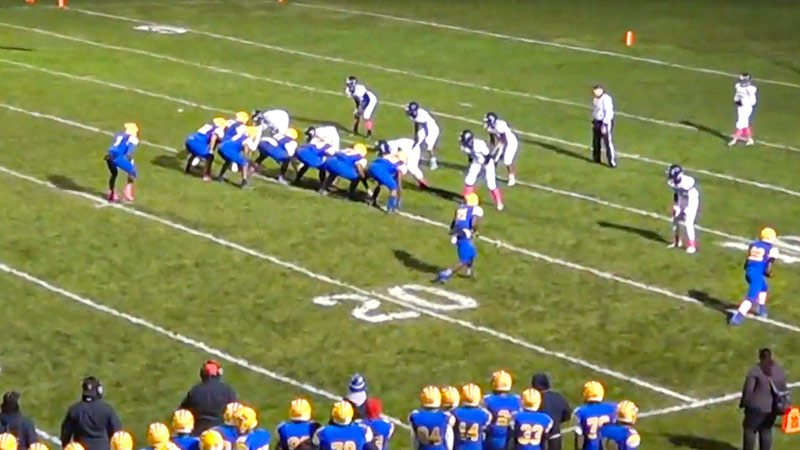
The single-wing formation features various positions, each with specific roles that contribute to the formation’s dynamic offense. The key positions in the single-wing formation include:
Tailback
The tailback is a versatile player responsible for running the ball, passing, and even punting. They’re often the focal point of the offense, carrying the ball and making strategic decisions based on the defensive alignment.
Fullback
The fullback plays a critical role in both blocking and running the ball. They provide power and support in short-yardage situations and can also act as a lead blocker for the tailback.
Quarterback (Blocking Back)
In the single-wing formation, the quarterback primarily functions as a blocker for the tailback. Their main responsibilities include blocking for running plays and protecting against defensive rushes.
Wingback
Positioned off the line of scrimmage, the wingback is a versatile player who can run, catch passes, and execute trick plays. They often serve as a flanker or slot receiver and contribute to the formation’s deceptive nature.
Linemen
The offensive line consists of linemen who are set in an unbalanced formation. Typically, there are four linemen on one side of the center and two on the other. These linemen provide protection, create running lanes, and maintain the integrity of the offensive front.
Center
The center initiates each play by snapping the ball to the quarterback or tailback. They play a crucial role in ensuring the coordination of the offensive line and the execution of plays.
Guards and Tackles
The guards and tackles form the offensive line and are responsible for blocking the defensive linemen, creating openings for the ball carrier, and providing protection for the quarterback.
When to Use Single Wing Formation?
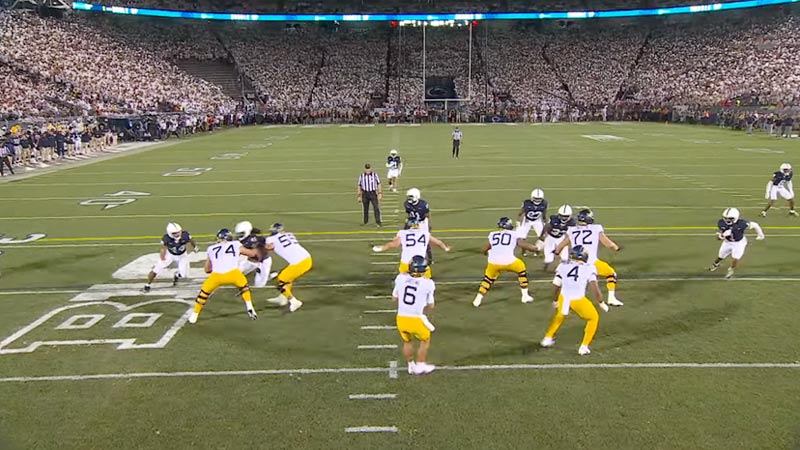
The single-wing formation is a historic offensive strategy that was popular in the early days of football.
While it’s less commonly used in modern football due to the evolution of offensive tactics, there are certain situations where teams might consider using the single-wing formation:
Surprise Plays
Teams can use the single-wing formation as a surprise element during a game. Because it’s not commonly seen in modern football, opponents might be caught off guard and struggle to adjust quickly.
Short-Yardage Situations
The single-wing formation can be effective in short-yardage situations where power running and strong blocking are crucial. The formation’s emphasis on having multiple blocking backs and a fullback can help gain those crucial few yards.
Trick Plays
The versatility of the single-wing formation allows for trick plays, reverses, and unexpected passing plays. Teams can use these deceptive tactics to confuse the defense and create big plays.
Ball Control and Time of Possession
The single-wing formation can be used to control the clock and maintain possession of the ball. By relying on a strong ground game and short passes, teams can keep the opposing offense off the field.
Limited Passing Skills
If a team’s quarterbacks lack strong passing abilities, the single-wing formation’s focus on running plays and shorter passing options might be more suitable for their skill set.
Youth or Amateur Leagues
The single-wing formation can be useful in youth or amateur leagues where players are still developing their skills. Its straightforward design and emphasis on teamwork can help players grasp fundamental football concepts.
How to Practice Single-Wing Formation
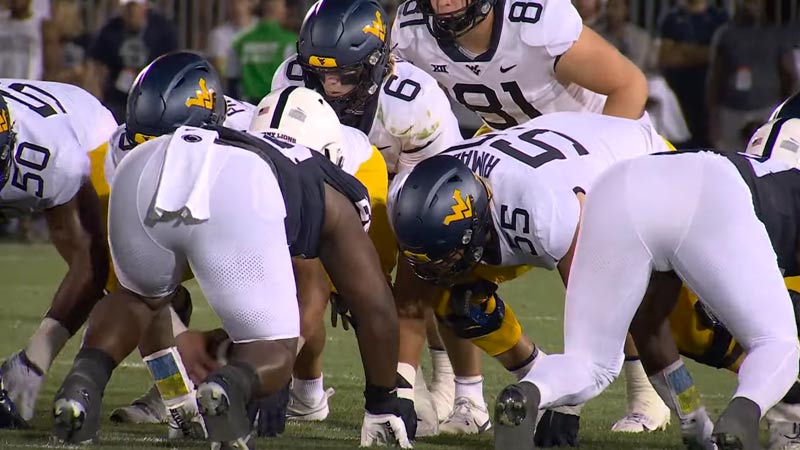
Practicing the single-wing formation requires a strategic approach to develop the necessary skills, coordination, and understanding among players. Here’s a step-by-step guide on how to effectively practice the single-wing formation:
Educate Players
Make sure all players understand the basics of the single-wing formation, its positions, and their respective roles. Provide resources, diagrams, and videos to help players visualize their responsibilities.
Start with Fundamentals
Begin with individual drills that focus on fundamental skills such as blocking, tackling, ball carrying, and passing. Players should hone these skills before integrating them into the formation.
Position-Specific Drills
Design drills that cater to each position’s requirements. Tailbacks can practice ball handling, cuts, and reading defenses. Linemen should work on blocking techniques, footwork, and creating running lanes.
Team Drills
Gradually introduce team drills that involve the entire single-wing formation. Conduct running plays, blocking scenarios, and short passing drills to simulate real game situations.
Communication and Timing
Emphasize communication among players to ensure seamless execution of plays. Work on timing between the quarterback, tailback, and blockers to maximize the formation’s effectiveness.
Practice Deception
Incorporate trick plays, reverses, and misdirections that the single-wing formation allows. Focus on disguising plays to confuse the defense and create big gains.
Scrimmages and Repetitions
Organize controlled scrimmages where the team practices using the single-wing formation against a simulated defense. Repetition is key to building muscle memory and improving execution.
Film Review
Record practice sessions and review the footage with players. This helps identify areas for improvement, assess player positioning, and refine execution.
Adapt to Defenses
Teach players how to read and adapt to different defensive alignments. Discuss strategies for countering common defensive tactics against the single-wing.
Game Simulation
As the team becomes more comfortable with the formation, simulate game scenarios in practice. Include various down-and-distance situations to ensure players understand when to use the single-wing effectively.
Adjustments and Feedback
Continuously assess the team’s progress and provide constructive feedback. Encourage players to ask questions and offer suggestions for refining plays and strategies.
Benefits of Single-Wing Formation
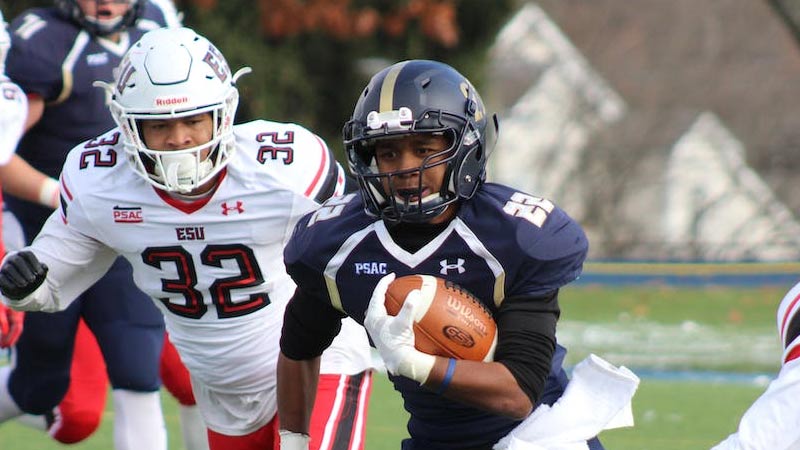
The single-wing formation, despite its historical origins, offers several potential benefits when used strategically in modern football:
Surprise Element
Since the single-wing is rarely seen in today’s game, using it can catch opponents off guard. The unfamiliarity of defending against this formation can create confusion and provide the offense with an advantage.
Power Running
The single-wing emphasizes a strong ground game, making it effective for power-running plays. With multiple blocking backs and a fullback, teams can excel in short-yardage situations and control the clock.
Deception
The formation’s versatility allows for various misdirection plays, reverses, and trick plays. The unpredictability of the single-wing can deceive defenses and lead to big gains.
Ball Control
The formation’s emphasis on running plays and short passes can help teams maintain possession and control the tempo of the game. This can limit the opposing offense’s opportunities and keep the defense fresh.
Blocking Scheme
The unbalanced line and the presence of multiple blocking backs create favorable blocking angles. This can lead to better protection for the ball carrier and improved blocking on running plays.
Versatility
The single-wing offers multiple options for ball distribution, allowing coaches to involve various players in the offense. This can make it difficult for the defense to key in on a single player.
Fundamental Skill Development
Practicing the single wing can improve players’ fundamental skills, such as blocking, tackling, ball handling, and coordination. This can translate to better overall football skills.
Youth and Amateur Leagues
The single-wing can be a suitable option for youth or amateur leagues where players are still developing their skills. Its simplicity and focus on teamwork can aid player development.
Adaptation to Personnel
Coaches can adjust the single-wing formation to suit the strengths and weaknesses of their players. It can be particularly effective if a team has strong running backs and linemen.
Game Management
The single-wing’s ball control and time of possession can be valuable in managing games. It can be employed to protect a lead or limit the opposing team’s scoring opportunities.
Drawbacks of Single-Wing Formation
While the single-wing formation offers certain benefits, it also comes with several drawbacks that can limit its effectiveness in modern football:
Predictability
Over time, opponents may become familiar with the single-wing’s plays and tendencies, reducing its element of surprise and making it easier to defend against.
Limited Passing Threat
The single-wing formation de-emphasizes passing plays, which can make it predictable in certain situations. Defenses can stack the box to stop the run without the threat of a consistent passing attack.
Passing Skill Requirement
If the team lacks players with strong passing abilities, the limited passing options in the single-wing formation can become a liability. Defenses can focus solely on stopping the run.
Defensive Adjustments
Defenses with experience and proper preparation can adjust to the single-wing formation, nullifying its advantages. They can focus on disciplined assignments and gap control to limit big plays.
Unbalanced Line Vulnerability
The unbalanced offensive line can create vulnerabilities in pass protection, leaving the quarterback susceptible to blitzes and rushes from the strong side of the line.
Complex Execution
The single-wing requires precise timing, coordination, and execution from all players involved. Mistakes in ball exchanges, blocking assignments, or routes can lead to turnovers or negative plays.
Personnel Limitations
Not all teams may have the personnel suited for the single-wing formation. If players lack the necessary skills for the formation’s specific roles, their effectiveness will be diminished.
Modern Defensive Schemes
Many modern defensive schemes are designed to counter complex formations, including the single-wing. Defenses often have the speed and versatility to adapt to misdirection plays and cover multiple offensive threats.
Scarcity of Resources
Compared to more mainstream formations, finding up-to-date resources, playbooks, and coaching expertise for the single-wing might be challenging, limiting the team’s ability to fully grasp and implement the formation.
FAQs
What is the Football Single-Wing Formation?
The Football Single-Wing Formation is a historic offensive strategy that dates back to the early days of the sport. Developed by legendary coach Pop Warner in the early 1900s, this formation features a core of four backs, an unbalanced offensive line, and a unique emphasis on power running and deception.
Which positions are integral to the Single-Wing Formation?
Key positions in the Single-Wing Formation include the tailback, fullback, quarterback (blocking back), wingback, linemen, guards, tackles, and center. Each player has distinct roles, contributing to the formation’s power running and versatile offensive plays.
How does the Single-Wing Formation differ from modern offensive strategies?
Unlike modern spread offenses that prioritize passing and space, the Single-Wing Formation emphasizes power running, ball control, and misdirection plays. It’s characterized by an unbalanced offensive line, a strong ground game, and a range of deceptive tactics.
When is the Single-Wing Formation effective in today’s football?
While less commonly used, the Single-Wing Formation can be effective in short-yardage situations, trick plays, and scenarios where power running is crucial. Its surprise element, deception, and ball control aspects can catch opponents off guard.
What are the drawbacks of the Single-Wing Formation?
The Single-Wing Formation can be predictable over time, lacks a strong passing threat, requires complex execution, and can be vulnerable to modern defensive schemes. Its effectiveness depends on the team’s personnel, opponent analysis, and adaptability.
Wrapping Up
As football continues to evolve, the Single-Wing Formation remains a remarkable testament to the sport’s history and innovation. While its utilization might be limited in modern football, understanding the formation provides insights into the evolution of offensive strategies.
From its unbalanced lines to its versatile backfield, the Single-Wing Formation showcases the creativity and adaptability that have shaped football into the dynamic sport we know today.
Whether as a historical curiosity or a strategic consideration, the Single-Wing Formation reminds us of football’s enduring essence—a balance between tradition and progress. Best of luck.

